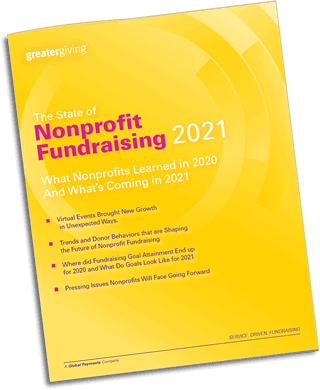
Harness today’s LARGEST donor demographic with these quick and effective micro-philanthropy strategies.
We posted recently about how Small Donors are Giving Big since the pandemic began, and that trend doesn’t show signs of slowing down. “Crowdfunding” platforms, where hundreds of individuals can give in small amounts for a specific cause, have exploded in the last year and are only projected to continue growing (Fundera).
A shift is happening in nonprofit fundraising. More small donors than ever are getting involved in causes they care about by giving “micro-donations,” and successful fundraisers are jumping on it.
What are “Micro-Donations,” and why should you care right now?
Typically donations under $10 are considered “micro-donations,” but a micro-donation is any gift small enough to go almost unnoticed. While donations of $10 or $20 may not sound like much—especially when compared with major donor contributions!—micro-philanthropy has already begun to shape the fundraising landscape. The revenue potential in micro-donations has exploded, with “crowd-funding” emerging as a leading peer-to-peer fundraising method and generating $17.2 billion last year in North America alone.
But it’s not simply one trend alone that’s driving fundraisers to look more closely at micro-donations. As the world reeled from the effects of COVID-19, and nonprofits were forced to cancel events and shift focus to survive, a remarkable surge of everyday people generously stepped up to help.
Greater Giving’s The State of Nonprofit Fundraising report revealed that charitable giving from small, individual donors soared amid the pandemic—and online donations, many of them micro-donations, became critical sources of funding for nearly 50% of nonprofits in 2020. Typical in-person galas went online, allowing more donors than ever to access previously closed-door events and support causes they care about.
Who are these small donors?
With the power of smartphones and social media at our fingertips, no one is better equipped to mobilize hundreds or even thousands of other people, than Millennial and Gen-Z donors. Younger donors often have large social networks that nonprofits can tap into with nothing more than the effective use of social media—meaning more contributions to fund your nonprofit’s essential mission and services.
Quickly add micro-donations to your existing campaigns
As with any new approach to fundraising, creating a new campaign or outreach plan typically takes time and money—but what no one will tell you is that micro-philanthropy can fit into your current campaign RIGHT NOW.
These quick tips will help your nonprofit benefit from micro-donations from an existing supporter network immediately, and in a future blog post, we’ll discuss ways to construct future campaigns (such as upcoming year-end giving!) to specifically target micro-donations and cultivate those donors for the future.
1. Include quick links to your nonprofit’s donation page on every possible channel. This includes websites, all social media pages, new social posts, email marketing, even snail mail. Consider easy services like Greater Giving’s Text-to-Donate feature, where all donors need to do is text a five-digit code—easy to include on a paper mailing!
2. Design a FAST donation page! The longer a potential donor has to spend making the donation, the more likely it is they won’t complete it! Keep your donation page to the bare minimum: preferably just the donation amount and a payment type.
TIP: Should you include suggested donation amounts? It depends! If you have a specific micro-donation page, then listing a few common amounts reduces the work potential donors have to do, and they’re more likely to click “donate.”
Listing higher suggested donation options has been shown to inspire bigger giving—but it can also scare away anyone who doesn’t feel they can afford it. Remember, micro-donations are all about quantity of donors. This is the place where small donations are welcome!
3. Payment in as few clicks as possible. Offer donors a common payment method, preferably one where most people are already signed into their account. With Greater Giving’s Online Payments, payment processing comes built into the donation page! The easier it is to give, the less time the donor spends second-guessing themselves—which means more completed donations.
4. Offer pledge reminders. You can set up a “pledge,” or payment reminder, if someone doesn’t complete their donation on the fly. Simply collect an email address and a pledge amount, and send a follow-up email to complete the donation once the donor has time.
5. Encourage recurring donations. Recurring donations are the bread and butter of sustainable revenue. Add a checkbox on your donation page that turns a single, one-time donation of $5 or $10 into a monthly donation, and let donors know why reliable income makes your nonprofit’s work possible!
SMALL, ONE-TIME DONORS CAN BECOME LIFELONG DONORS
Convert those impulse donors into longtime donors. Subscriptions are common these days, and often it’s easier for someone to give $5 a month than $100 all at once. Give donors an option to make their donation recurring!
